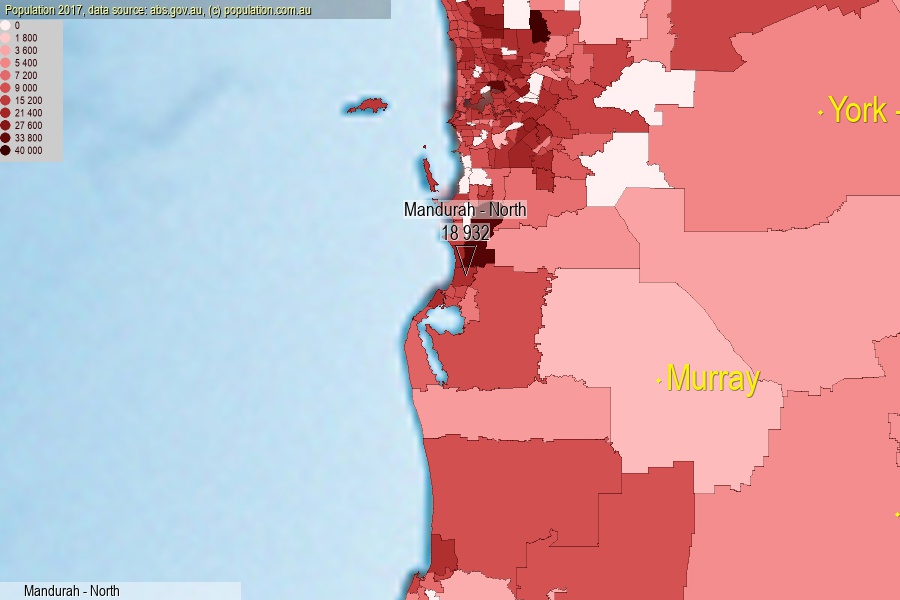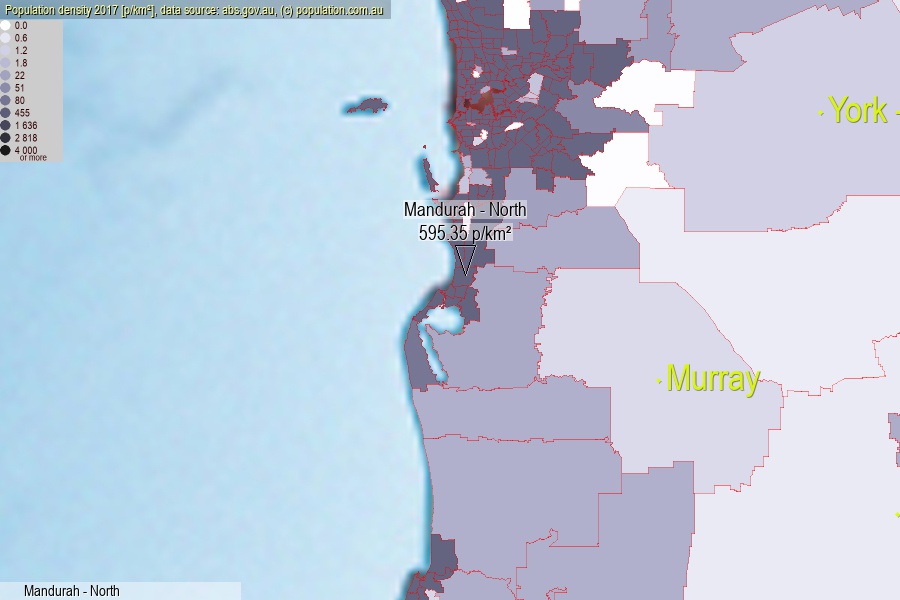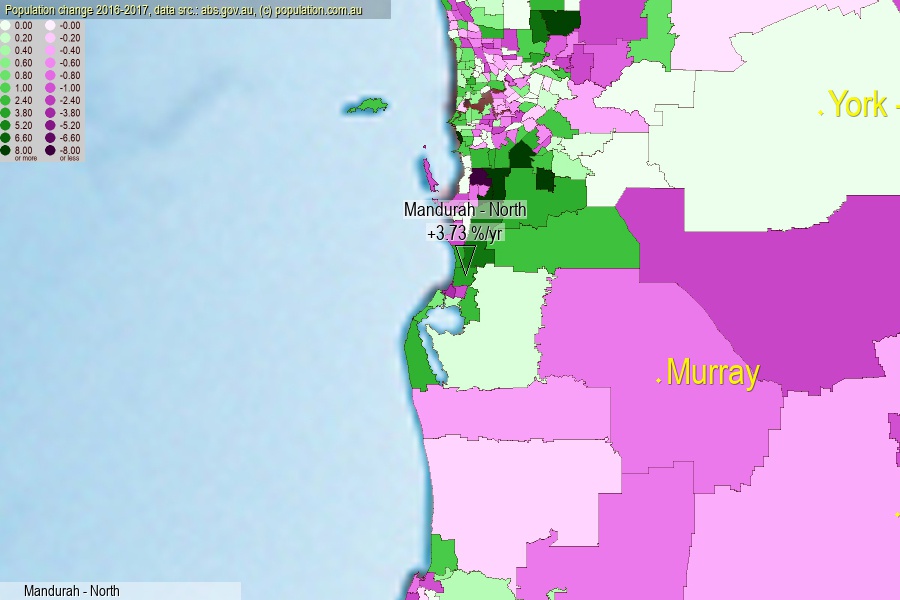 population.com.au
population.com.auLast official estimated population of Mandurah - North (as Statistical Area Level 2) was 18 932 people (on 2017-06-30)[2]. This was 0.08% of total Australian population and 0.73% of WA population. Area of Mandurah - North is 31.80 km², in this year population density was 595.35 p/km² . If population growth rate would be same as in period 2016-2017 (+3.73%/yr), Mandurah - North population in 2025 would be 25 379. [0]



Click to enlarge. Mandurah - North is located in the center of the images.
Population [people], population density [p./km²] and population change [%/year] [2]
View borders » (new window) [4]
[1991-1992] +23.73 %/Yr.
[1992-1993] +14.95 %/Yr.
[1993-1994] +20.61 %/Yr.
[1994-1995] +14.75 %/Yr.
[1995-1996] +7.74 %/Yr.
[1996-1997] +8.83 %/Yr.
[1997-1998] +6.98 %/Yr.
[1998-1999] +11.40 %/Yr.
[1999-2000] +8.27 %/Yr.
[2000-2001] +7.46 %/Yr.
[2001-2002] +2.73 %/Yr.
[2002-2003] +3.79 %/Yr.
[2003-2004] +5.01 %/Yr.
[2004-2005] +5.94 %/Yr.
[2005-2006] +14.57 %/Yr.
[2006-2007] +15.41 %/Yr.
[2007-2008] +15.63 %/Yr.
[2008-2009] +9.71 %/Yr.
[2009-2010] +6.93 %/Yr.
[2010-2011] +11.66 %/Yr.
[2011-2012] +11.15 %/Yr.
[2012-2013] +8.72 %/Yr.
[2013-2014] +6.38 %/Yr.
[2014-2015] +4.48 %/Yr.
[2015-2016] +3.96 %/Yr.
[2016-2017] +3.73 %/Yr.
[0] Calculated with linear interpolation from officially estimated population
[1] Read more about SA2 and Australian Statistical Geography Standard (ASGS) on abs.gov.au
[2] Population data from Australian Bureau of Statistics (Population and density: 2017; change: 2016-2017)
[3] Digital Boundaries: Australian Statistical Geography Standard (ASGS) 2016.
[4] Border coordinates are simplifyed using Ramer-Douglas-Peucker algorithm.